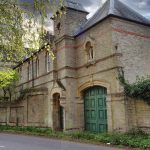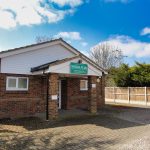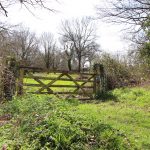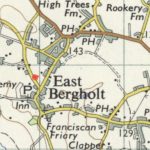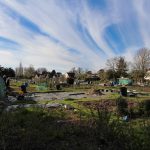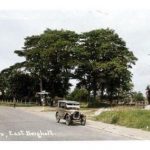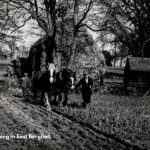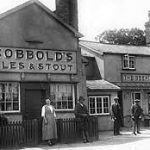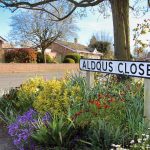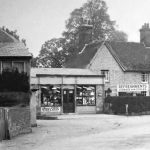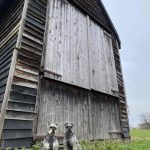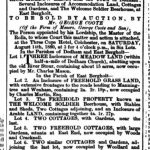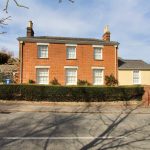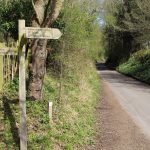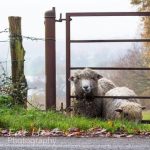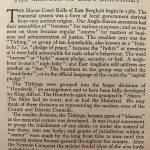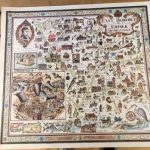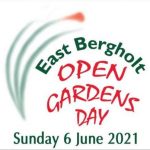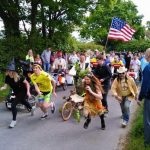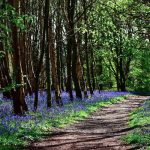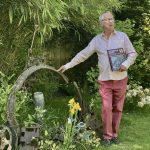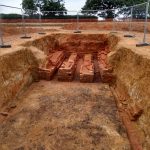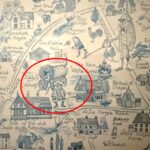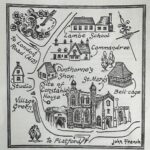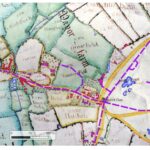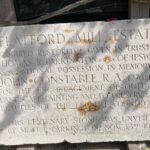Albion was the general name for a series of fairs that ran throughout East Anglia from 1978 to 1982.
Theses fairs began with the Barsham Medieval Faire in 1972 and developed into a significant feature of rural East Anglia, based on a recreation of a medieval craft fair which would include music, theatre and circus act along with traditional craft stalls.
Old Hall ran these for 4 years in succession on the August bank holiday weekend.
The building, a corrugated iron construction, painted green and from 1817 was the base of the village fair, held on the field which is we know today as Willet’s Pond.
Originally a medieval satellite hamlet of the village, Gaston’s End is an historic settlement with the pattern of the triangular green known as the ‘BOX IRON’, bordered by Heath Road, Quintons Road and Woodgates Road
The Unity hut, on the site of the Red House, north side of Hadleigh Road.
Built in the 1950's as a youth centre for children in the village, and in use until the 1970's until the land was sold off for housing development.
The Allotments, named after Joseph Chaplin of Chaplin’s, East Bergholt who having benefitted from the enclosure act in 1817, left in his will a large area of land for the village to use as allotments.
Said to be named after four sisters that regularly met at the crossroads.
During the first half of the 20th century and because of the constraints of transport, most local people also worked locally, in domestic service, in trades, at one of the 2 factories in Brantham, or on one of the 20 plus farms we had here in East Bergholt, all employing labour, and most having just one or two horses, which meant much manual work!
Interestingly we have found a number of different references to ‘Lost pubs of East Bergholt’, a number of names we recognise, some we don’t, but rumour has it that there were as many as 14 at one point, albeit a number of them probably front room beer houses, but apart from the current pubs The Hare & Hounds, The Royal Oak (The Dickie), The Carriers & The Lion, we have reference also to a number of others:
Village names, road names, house names, they all have meaning and history behind them.
These are a few we have managed to identify but so many more.
Back as far as the 1900’s there have been some interesting shops and characters serving us in the village. Here are a few and in no particular order:
On the William Brasiers 1731 map of East Bergholt it clearly shows a building on this site marked as ‘NORTHDON’ however it is unclear if this was a agricultural building or a property, but clearly was on the south west edge of the old Heath.
Located on the Manningtree Road, The Welcome Soldier Beerhouse. Unknown for how many years this property operated as a Beerhouse as only 2 landlords have been identified.
Described as an English humorist Jennings was best known for his ‘Oddly Enough’ column in The Observer that ran for many years and also wrote popular children’s books including ‘The Great Jelly of London’, The Hopping basket’ and ‘The Train to Yesterday’
Known as Tunnel Lane because of its Elm Tree canopy which sadly died of disease in the 1980's
Rare breeds, of whom origins in the ancient agricultural of animals kept by our ancestors, they continue to preserve their unique genes which is critical as we may need the traits they carry in the future.
The parish of East Bergholt is just over 3000 acres and by Anglo Saxon times it was a well established community. It was divided into four manors with Old Hall the principal manor containing part of Flatford hamlet. In the Domesday Book of 1084 it is recorded as the royal parish of ‘Bercolt’, which means it was held as the personal property of the king.
East Bergholt has seen a host of artists over the years, the most obvious John Constable, but we have also seen John Dunthorne (Junior and senior), Edward Ardizzoni, Nick Butterworth, Lucy Harwood, and of course John French.
Childrens author who books include My Dad is Brilliant’ ‘Mr Grandpa is Amazing’, ‘One Snowy Night’, and ‘The Whisperer’, he is best known for his series of Children books ‘Percy the Park Keeper’
Open Gardens raising funds for St Marys Church Preservation Society with a chance to view many open gardens around the village.
Next open gardens day JUNE 2023
The Village pram race has been running for xx years and is an annual event, hosted the last May bank holiday each year.
Medieval woodland known for its display of Bluebells in the Spring.
A historic landscape study of East Bergholt published November 2020. A study to considers the archaeological dimension of the village that stretches back into prehistory, the time depth of the landscape around the village documented in Constable’s paintings and the modern heritage and landscape context of the village
Author, filmmaker and photographer, Simon Dunstan has written more than 55 books on military history, and directed numerous military history documentaries for the history channel and ‘retired’ to the village in 2014
The remains of an 1800's Brick Kiln have been unearthed in a field next to the Medical Centre in Heath Rd. This kiln, typical of its type for Suffolk, would have been close to the Constable family Windmill on the corner of Mill Road and would typically have used locally sourced clay from "Clay Pit Field" next door north east of the Donkey Track. The red bricks from this kiln would doubtless have found their way into numerous houses in the village built during that period.
Finding such a site in good condition is unusual, although a few other examples have been found in this part of Suffolk. It is unfortunate that, within a week of the find being made public, the developers filled in the site completely. Sadly therefore, except for the photos, we have lost this little bit of Victorian industrial history almost as soon as we found it.
(Download this article as a PDF here)
Back in the 1930s, before the days where rural villages could be pipe-fed wate from reservoirs, boreholes would have been essential for domestic and agricultural use. The East Bergholt Notcutts borehole provides evidence of these. It also adds a little history on how the traveller population would have resided in the village - as reported here by Joan Millar who now owns the field on which the now-redundant borehole now sits.
Celia Jennings lived with her husband ‘Paul Jennings’ (British Author) at Hill House on Rectory Hill in the 1960’s-1980’s and lead a group of people interested in local history of the village.
She wrote a number of articles for the East Bergholt Society and also published ‘John Constable in Constable country’ in 1977
The Brasier map can be found in the Benneworth Lounge at Constable Hall.
The Preservation of Flatford: Honoring the Legacy of Mr. Thomas Parkington (1866-1942)
Explore Mark's extensive research on East Bergholt's war heroes in our 'War Stories' section. Read below to learn about his background and ongoing dedication to preserving their memories.

